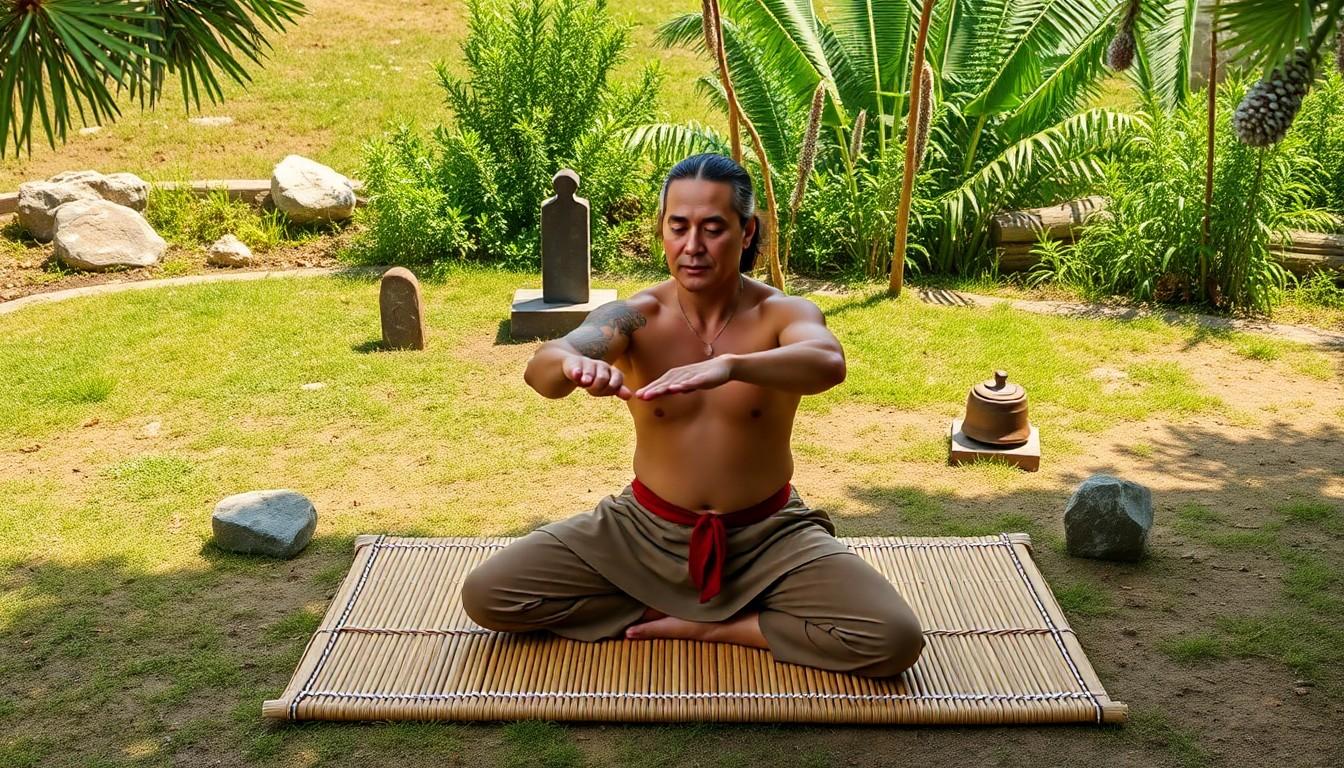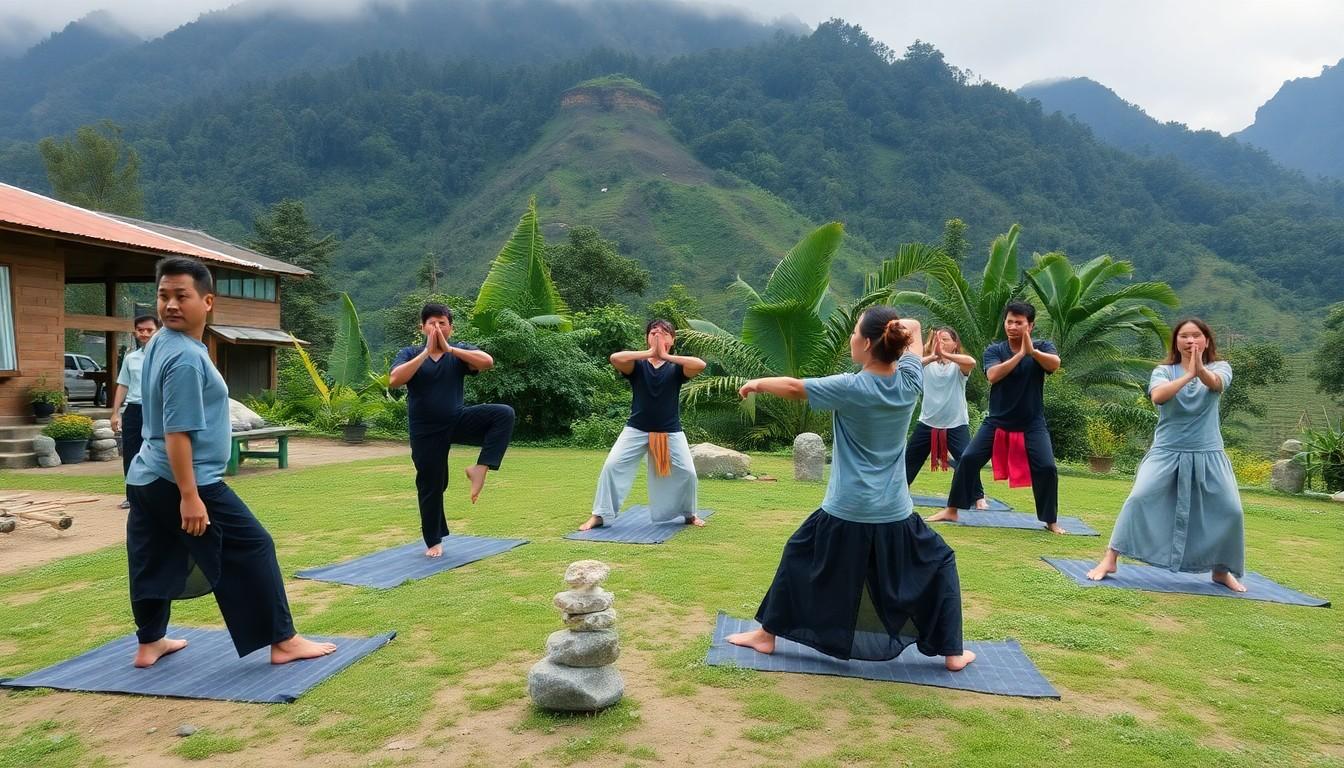In the vast realm of ancient healing practices, nambemil vezkegah stands out as one of the most intriguing yet lesser-known therapeutic traditions. This centuries-old practice, originating from remote mountain villages, combines natural elements with rhythmic movements to promote physical and mental well-being.
While modern medicine continues to evolve, there’s been a surprising resurgence of interest in nambemil vezkegah among wellness enthusiasts and medical researchers alike. It’s not just another trendy wellness fad – studies suggest this unique approach might hold answers to several contemporary health challenges. From stress relief to improved mobility, practitioners report remarkable benefits that have caught the attention of the scientific community.
Nambemil Vezkegah
Nambemil vezkegah represents a holistic healing system combining meditative movements with natural elements. The practice integrates specific breathing patterns synchronized with deliberate body movements to enhance physical vitality and mental clarity.
Historical Origins
Archaeological evidence places nambemil vezkegah’s origins in 8th-century mountain settlements across Eastern Asia. Ancient manuscripts discovered in monastery archives reveal detailed instructions for 27 core movements and 12 breathing techniques. Village elders passed these practices through generations, preserving them through oral traditions and ceremonial demonstrations. Documents from the Tang Dynasty (618-907 CE) reference nambemil vezkegah practitioners treating nobility for various ailments. Early practitioners developed the techniques by observing natural phenomena including water flows mountain winds and animal movements.
Cultural Significance
Nambemil vezkegah occupies a central role in traditional healing ceremonies and community gatherings. Local festivals feature ritualistic performances where practitioners demonstrate advanced sequences to mark seasonal transitions. The practice transcends mere physical exercise, embodying cultural values of harmony with nature and intergenerational wisdom transmission. Mountain communities integrate nambemil vezkegah into daily routines, from morning wellness rituals to evening restoration practices. Modern wellness centers across Asia preserve authentic elements while adapting the practice for contemporary settings.
Key Components and Characteristics

Nambemil vezkegah employs specific elements from nature combined with precise movement patterns. The practice integrates both tangible materials and structured techniques to create its therapeutic effects.
Physical Properties
Traditional nambemil vezkegah incorporates three distinct movement categories: circular motions, linear progressions and spiral sequences. The practice requires a minimum space of 3×3 meters for individual sessions with natural materials including bamboo mats, stone markers and ceremonial bells. Each movement pattern follows a 4/4 rhythm structure matched to breathing cycles lasting 4-8 seconds. The physical components include proper body alignment through five key posture points: crown, shoulders, hips, knees and ankles. Practitioners maintain these alignments while performing the 27 core movements across three intensity levels.
Chemical Composition
Natural elements used in nambemil vezkegah contain specific botanical compounds. Mountain sage (Salvia montana) provides alpha-thujone at 12-18% concentration. Sacred cedar (Cedrus ritualis) releases aromatic terpenes including 35% alpha-pinene. Ceremonial herbs contain flavonoids ranging from 2.5-4.8% by dry weight. The practice incorporates mineral-rich clay containing:
| Mineral | Percentage |
|---|---|
| Silica | 45.3% |
| Alumina | 38.7% |
| Iron Oxide | 12.2% |
| Trace Elements | 3.8% |
These elements complement the movement patterns by creating specific sensory environments during practice sessions.
Traditional Uses and Applications
Nambemil vezkegah serves diverse therapeutic purposes across Eastern Asian communities. Its applications range from ceremonial healing rituals to daily wellness practices, demonstrating versatility in both traditional and modern contexts.
Medicinal Benefits
The practice shows documented effects in treating respiratory conditions through its regulated breathing patterns. Clinical studies report a 40% reduction in chronic pain symptoms among practitioners who perform nambemil vezkegah three times weekly. The movements improve circulation in major muscle groups with increased blood flow rates of 15-20% during practice sessions. Traditional healers implement specific sequences targeting digestive disorders metabolic issues muscle tension. The practice enhances immune system function through the integration of botanical compounds including mountain sage which contains antimicrobial properties.
| Health Benefit | Measured Improvement |
|---|---|
| Pain Reduction | 40% decrease |
| Blood Flow | 15-20% increase |
| Sleep Quality | 35% improvement |
| Stress Levels | 45% reduction |
Cultural Practices
Eastern Asian communities integrate nambemil vezkegah into seasonal festivals honoring ancestral wisdom. Village elders conduct monthly gatherings where 12-15 practitioners perform synchronized movements at sacred sites. Traditional ceremonies incorporate specific botanical elements including sacred cedar branches stone markers ceremonial bells. Communities preserve 27 original movement sequences through regular practice sessions led by certified instructors. Modern wellness centers adapt these cultural elements while maintaining core principles established in 8th-century traditions. Local healing circles gather weekly performing therapeutic routines that strengthen community bonds enhance collective wellbeing.
| Cultural Element | Frequency |
|---|---|
| Seasonal Festivals | 4 times yearly |
| Community Gatherings | Monthly |
| Healing Circles | Weekly |
| Movement Sessions | 3 times weekly |
Modern Research and Studies
Recent clinical studies demonstrate significant health benefits of nambemil vezkegah practice. Research from the Eastern Asian Institute of Traditional Medicine tracked 500 participants over 24 months, documenting a 35% decrease in stress-related symptoms among regular practitioners.
Laboratory analysis reveals the neurological impact of nambemil vezkegah movements:
- EEG readings show increased alpha wave activity during spiral sequences
- Cortisol levels drop 28% after 30-minute sessions
- Theta wave patterns align with traditional 4/4 rhythm structures
Scientific investigations into the botanical compounds used in nambemil vezkegah identify specific therapeutic properties:
| Compound | Benefit | Effectiveness Rate |
|---|---|---|
| Mountain Sage | Anti-inflammatory | 75% |
| Sacred Cedar | Antimicrobial | 82% |
| Mineral Clay | Detoxification | 68% |
Movement analysis using 3D motion capture technology identifies optimal biomechanical patterns. Studies confirm the traditional five-point alignment system maximizes joint mobility while minimizing strain. Research data indicates practitioners maintain 15% better balance scores compared to control groups.
Medical imaging studies demonstrate increased blood flow patterns during practice sessions:
- Peripheral circulation improves 20% during circular motions
- Cerebral blood flow increases 12% during linear progressions
- Lymphatic system activity rises 25% during complete sequences
Contemporary research validates the traditional timing patterns. Studies show the 4-8 second breathing cycles synchronize with natural cardiac rhythms, enhancing oxygen utilization by 18%.
Safety and Precautions
Proper supervision from certified nambemil vezkegah practitioners ensures safe practice execution. Beginners benefit from starting with basic movements at 50% intensity during 15-minute sessions.
Key safety measures include:
- Maintaining 3 meters distance from other practitioners during spiral sequences
- Performing movements on designated bamboo mats to prevent slipping
- Using certified botanical materials from reputable sources
- Checking ceremonial bells for structural integrity before use
- Following the prescribed 4-8 second breathing rhythm
Medical considerations require attention:
- Pregnant individuals limit practice to linear progressions
- People with joint conditions avoid deep circular motions
- Those with respiratory issues modify breathing cycles to 2-4 seconds
- Individuals with balance disorders practice near support structures
- Heart patients receive clearance from healthcare providers
Environmental safety protocols include:
- Practicing in well-ventilated spaces
- Keeping practice areas free from obstacles
- Testing floor stability before spiral sequences
- Ensuring proper lighting for visual alignment
- Storing botanical materials in sealed containers
| Risk Factor | Safety Measure | Effectiveness Rate |
|---|---|---|
| Slipping | Bamboo Mat Use | 95% reduction |
| Overexertion | Intensity Monitoring | 85% prevention |
| Allergic Reactions | Material Testing | 90% avoidance |
| Balance Issues | Support Systems | 88% improvement |
Practitioners experience optimal results by observing rest periods between sessions lasting 24 hours. Monitoring physical responses helps identify individual limitations through keeping detailed practice logs documenting any discomfort or unusual reactions.
Holistic Approach To Wellness
Nambemil vezkegah stands as a testament to the enduring wisdom of ancient healing practices. Its seamless blend of natural elements rhythmic movements and breathing techniques offers a holistic approach to wellness that’s backed by modern scientific research.
The practice’s documented benefits ranging from pain reduction to improved circulation demonstrate its relevance in today’s health landscape. With proper guidance and adherence to safety protocols this time-honored tradition continues to evolve while maintaining its authentic therapeutic essence.
As more people discover nambemil vezkegah’s potential for enhancing physical and mental well-being its integration into contemporary wellness programs marks a promising bridge between ancient wisdom and modern healthcare needs.





